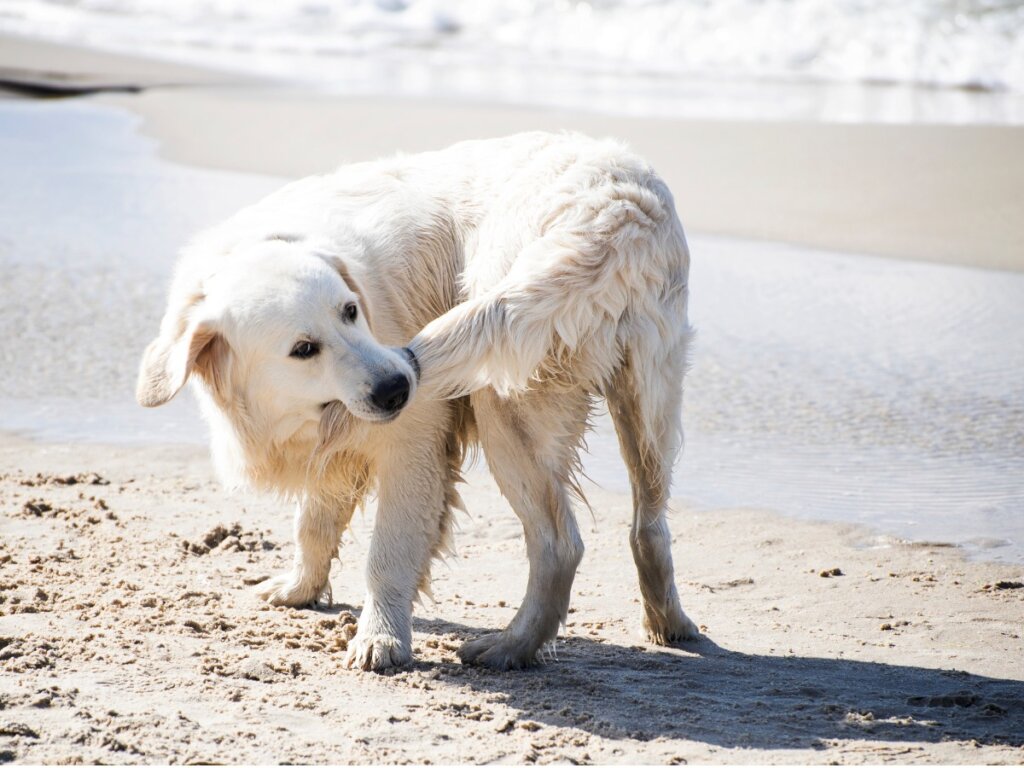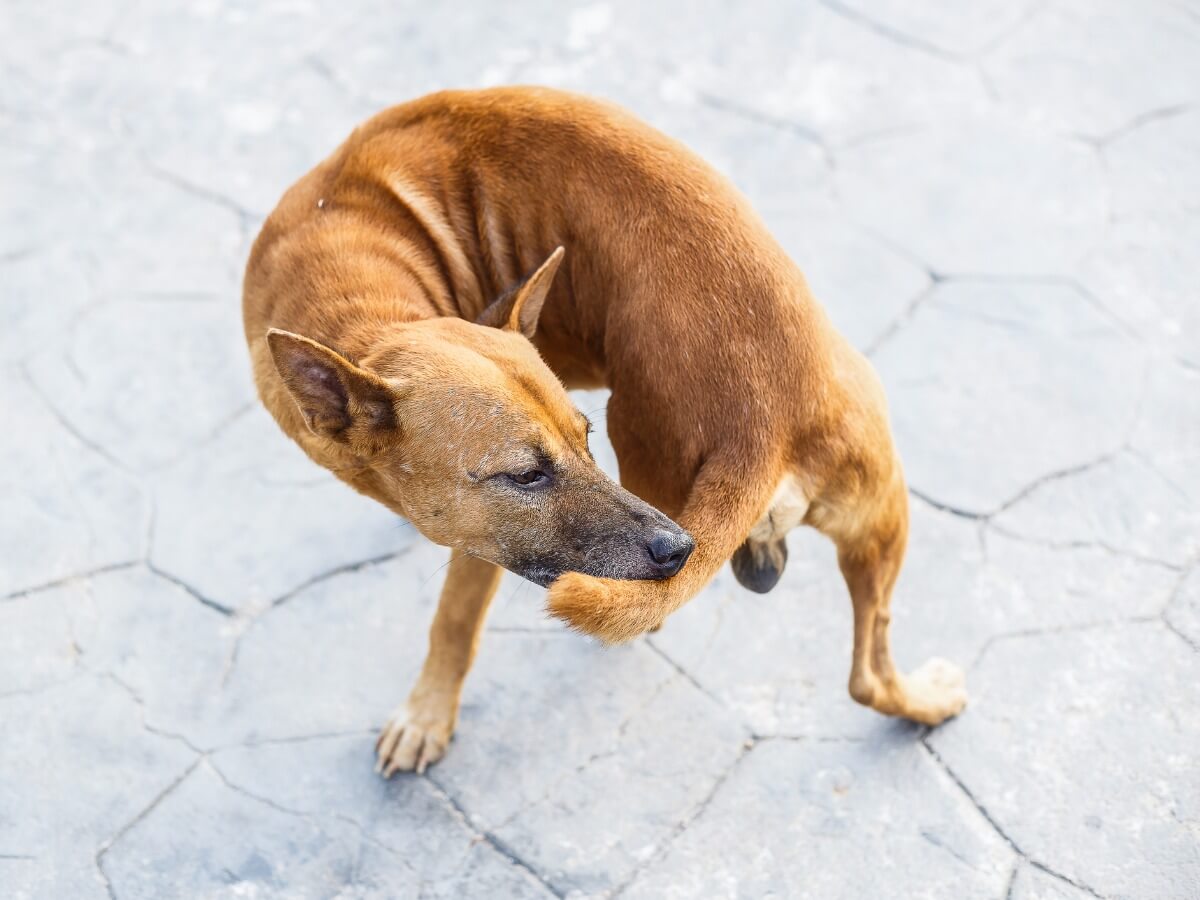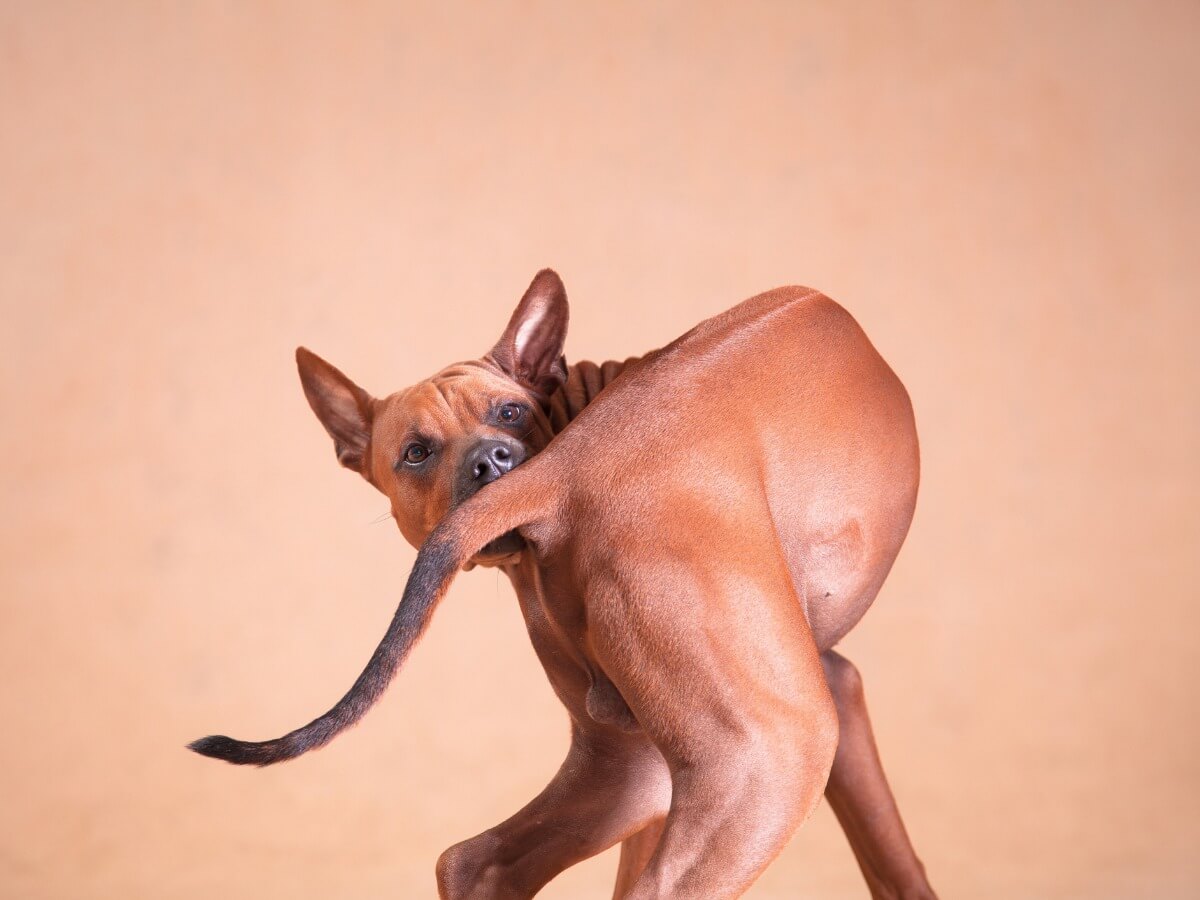Why Do Dogs Bite Their Tails?

When dogs bite their tails, or try to do it while turning round and round, it often causes great hilarity, and social networks are full of such videos. This behavior isn’t necessarily problematic, but it’s important to know why it occurs in order to be able to identify if it has become a disorder.
In this article, we’re going to describe this behavior, as well as explaining when you should go to see a specialist. If you’re interested in this topic, or if your dog exhibits this behavior, then read on to find out more.
Natural behavior
When dogs bite their tails, we aren’t always dealing with pathological behavior. This is the case with puppies, who are used to tail chasing as a way of discovering their own body through play. The animal simply sees something moving behind it and tries to catch it.
If this behavior persists into adulthood, then you may have been reinforcing it if the dog senses that you’re paying special attention to it when it does it, or even if you reward it in any way. In these cases, you should just simply ignore the dog and the behavior will disappear over time.
Sometimes owners reinforce problematic behavior simply by listening to the dog.

When dogs bite their tails: when to worry
Except in the case of puppies, an adult dog biting and chasing its tail should be a cause for concern (especially if it does so obsessively). There are different pathological causes as to why a dog exhibits this behavior. We’ll tell you about them in the following sections.
Physical health problems
Pain, itching, and other unpleasant sensations in the area are often the cause of the dog chasing its tail in an attempt to relieve them. The most common physical problems are the following:
- External parasites: If the dog has any parasites in that area (fleas or ticks, for example) it may be trying to get rid of it. The itch that doesn’t go away will cause it to nibble the area incessantly.
- Wounds: A wound or a foreign body in the skin of the tail will cause the animal pain and it’ll try to lick the area.
- Perianal gland problems: These glands, located on both sides of the anus, serve to lubricate the stools when they come out and to send olfactory information to other dogs. If they become blocked, infected, or if it develops other ailments, then the dog will want to alleviate the discomfort. On these occasions, you may see it dragging its anus on the ground in addition as well as biting its tail.
- Skin problems: Allergies, mange or viral infections are some of the most typical problems when dogs bite their tails, as they cause itching and stinging.
- Herniated discs and other spinal problems: Pathologies of this nature can cause pain or tingling in the caudal areas of the back. Faced with these sensations, the dog turns around to try to identify and alleviate the cause of the pain.
Behavioral causes
If the animal is under stress, anxiety, or other adverse mental situations, it’s possible that what was a simple game can turn into a habit. The causes behind this are diverse and need the same attention as the physical ones:
- Lack of stimulation. Sometimes dogs will bite their tails as a way to relieve boredom.
- Loneliness and a lack of affection: Tail chasing can be the physical projection of feelings of abandonment and a lack of socialization.
- Confinement: In cases of dogs that never go outside, chasing their tails is a form of catharsis in the face of excess energy that’s produced by a lack of exercise and stimulation. Stereotypes are pathological behaviors present in almost all species under confinement conditions.
- Behavior reinforcement and call for attention: If the dog has learned that you pay attention to it when it chases its tail, then it will do so whenever it wants you to take notice of it.
What to do when dogs bite their tails?
If you think that your dog is showing this behavior and you consider that it could indicate some sort of problem, then, first of all, you need to find what’s causing it. The best solution is to go to the vet. The first thing they’ll want to rule out are the physical causes and, if there are any, they’ll start treating the problem.
If, on the contrary, it’s a psychological problem, then the best option is always a canine educator. With their help, you’ll be able to identify the stressors that are affecting your dog and you’ll receive resources to correct those causes. Like any disease, conduct disorders require attention and a healing process.

The last tip is always prevention. A good diet, deworming, and up-to-date vaccinations, as well as periodic veterinary check-ups, are the best solution to prevent future behavioral problems. In addition, preventive medicine saves money (and hassles) in the long term, giving you the opportunity to spend your resources and time enjoying great times with your dog.
All cited sources were thoroughly reviewed by our team to ensure their quality, reliability, currency, and validity. The bibliography of this article was considered reliable and of academic or scientific accuracy.
- Elgier, Á. M., Jakovcevic, A., Mustaca, A. E., Bentosela, M., & Barrera, G. (2009). Problemas de comportamiento en los perros domésticos (canis familiaris): aportes de la psicología del aprendizaje. Revista de Psicología, 18(2), ág-123.
- Tiira, K., Hakosalo, O., Kareinen, L., Thomas, A., Hielm-Björkman, A., Escriou, C., … & Lohi, H. (2012). Environmental effects on compulsive tail chasing in dogs. PloS one, 7(7), e41684.